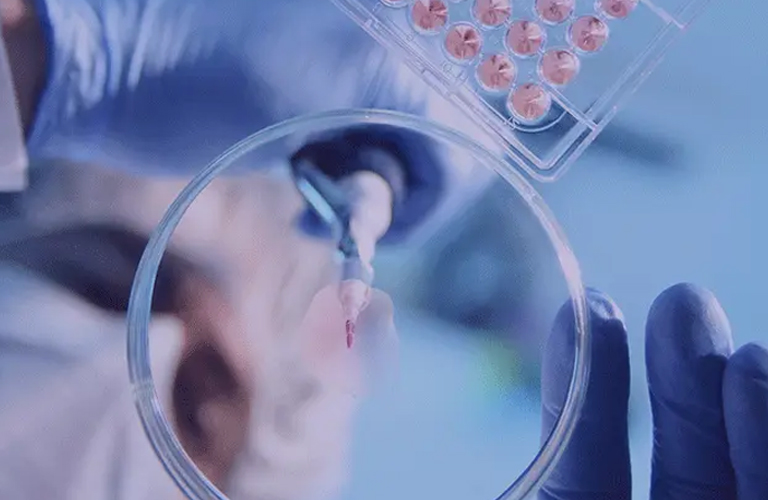The Role of the Microbiome in the Pathogenesis of Parkinson's Disease by Rejko Krueger
Welcome everybody. First of all, I would like to thank the organizers for giving me the opportunity to present to you today on The Role of the Microbiome in the Pathogenesis of Parkinson's Disease. As you may be aware, that's an emerging topic in Parkinson's disease, and I would like to present you some of our results that we generated here, based on our Luxembourg Parkinson's cohort.
First of all, I think we are getting more and more aware that there's a closer connection between the guts and the brain as we anticipated. That is not only via the vascular system that we have a connection of blood flow that connects guts with brain, but also a direct neural connection via vagus nerve that connects the brain stem with parts of the guts. And I think that is important to realize because that can make our contributors of communication of the gut microbiome with their secreted metabolites, also nutrients, but also pathogenic proteins and cytokines that could interfere with CNS function.
Regarding Parkinson's disease specifically, we should be aware that also dysfunction of the gastroenteric system is something that is very common and was even already mentioned in the first description of Parkinson's disease by James Parkinson. He already mentioned that there are muscles affected in the colon, and he mentioned that the people affected have difficulties with swallowing. There is problems with the bowel’s function. And he describes constipation as a prominent feature that we are all well aware now as a symptom belonging to Parkinson's disease.
In the meantime, there are a lot of clinical studies that supported that gastrointestinal dysfunction plays a role in Parkinson's disease. And you see here some examples that for instance, there was a dilataion of the small bowel in parkinsonism that was observed, gastrointestinal symptoms that even precede Parkinson's disease even up to 20 years. I think this is important, especially for constipation, which has been frequently observed that the symptomatology can precede the motor symptoms of Parkinson's disease by decades.
In the meantime, there's increasing evidence that the inhabitants of the intestines, the bacteria, the microbiome, really contributes to Parkinson's disease. And there are studies out that base on stool samples and that use different approaches. And I come to the technologies later that showed that there are changes in the gut microbiota that seemed to be specific for Parkinson's disease. Here in some study, it was even correlated with nasal microbiome. And it was shown that there even connections to the prodromal phase of Parkinson's disease, which he has defined as REM sleep behavior disorder.
So all that concept nicely fits with our current vision of the pathogenesis of Parkinson's disease, because we are getting more and more aware that this is a kind of ascending synucleinopathy with a critical step of pathological protein aggregation that can be observed in the lower brain stem. And as the progression of Parkinson's disease goes ahead from the preclinical stage over clinical Parkinson's disease affecting the mid brain area and substantial nigra pars compacta, where the dopaminergic neurons are located, up to the cortical involvement, if also dementia or cognitive impairment occurs during the later stages of Parkinson's disease.
So this start of Parkinson's disease in lower brain regions even already brings up the idea that “prion-like” spreading of α-synuclein may start more in the periphery. And indeed, there's some evidence that the vagus nerve, the 10th cranial nerve, is involved by, as I mentioned earlier, providing an anatomical connection between the intestines and the center of nervous system.
Here, I would like to show you that the key protein for α-synuclein pathology, which is a major component of the lewy bodies in Parkinson's disease, α-synuclein already aggregates in cells from the enteric system, so as you see here, the staining of the human duodenum. And you can see here that there is a presence of enteroendocrine cells, and there is some proximity to α-synuclein-containing enteric nerve cells. So the ENS, enteric nervous system, already shows pathological α-synuclein aggregation. And you can imagine that this may propagate through the vagus nerve that directly leads up to the brain stem. So abnormal protein aggregation does not start in the brain, but may already start in the periphery.
Indeed, there's also early evidence, and you see a study from the 80s that showed the presence of lewy bodies in ganglial cells of the plexus myentericus in Parkinson's disease patients. That's something that is very important to recognize that classical, pathogenic features of Parkinson's disease can be already observed on the enteric level and based on the anatomical links that I showed you, it could be expected that vagotomy could influence risk for developing Parkinson’s disease and indeed, there are, several studies out that show at vagotomy may reduce the risk for developing later Parkinson's disease, for the supporting that in early pathological step, may take place in the guts, and then translate into motor Parkinson's disease as a CNS-based neural degeneration.
Similarly to that impression, also another interesting study came out that showed appendectomy reduces the risk for Parkinson's disease up to 25%. So apparently there are also some predilection sites of α-synuclein pathology that may play a role and having getting rid of this predilections site, there may be a reduced risk to develop this α-synucleinopathy.
Coming back now to the role of the microbiome that may lately affect Parkinson’s disease pathology. There have been a number of studies performed. And for our publication, we reviewed that and assigned the different findings into that table. I think it's very interesting that even across very heterogeneous studies with variable sample sizes that you came here, ranging from only 14 patients here up to more than 190 patients for instance here, and also having different methods that relate to shotgun sequencing or 16s rRNA sequencing, there are some consistent features observed. And this is something I also want to like to mention later. But already, I want to show you that bacteria subspecies like Prevotellaceae seem to be consistently decreased in Parkinson's compared to healthy controls. And others like Verrucomicrobiaceae, which is Akkermansia species, that's something that has typically increased in Parkinson’s disease.
In our study, we could refer to a national effort in Luxembourg to create a national Parkinson’s disease cohort. The project launched in 2015 already, and we are now in the second funding period that will last until 2023. Here we were able to have a joint effort of different research institutions and clinics in Luxembourg to advance for earlier diagnosis and better treatment for Parkinson’s.
If you want to read this design of this national Parkinson’s study, you can find that also published in the meantime. What is important here is that we have a mono-center, longitudinal cohort approach that invited more than 800 patients with typical Parkinson's disease and atypical parkinsonians, and 800 controls. And we follow them up, and now we have them already followed up 6 years with annual visits. And these visits include distinct clinical phenotyping, but most importantly, also bio-sampling. And in this regard, I want to mention that also stool sampling is taking place. So we can call it clinical data with bio samples, so in this regard, stool data information on microbiota. Our study is, in the meantime among the 7% largest cohort in the world, so here we also very interested in the future to collaborate with other partners.
The microbe analyses in our study were recently published. And I would like to guide you a little bit through these data that provide further insights into how microbiome may affect the subject’s ability to Parkinson's disease.
For our initial analysis, we included 147 Parkinson's disease patients and 162 controls that were matched as you can see for age and gender. You can see that Parkinson's disease, patients have typical features of Parkinson's disease and more frequent non-motor symptoms. They take medication. And this cohort was included now, for having a stool collection, for having a 16s rRNA sequencing, and that then helped us to feed this data into a metabolic modeling approach with a COBRA setting that was done by Federico Baldini. And afterwards, it could be further supported and further analyzed by Johannes Hertel in terms of statistical modeling of compounds that can be deduced from this microbiota.
What was very interesting to see when we look into the different or significant genera that we could find that there was a significant increase of Akkermansia in Parkinson's disease compared to controls.
If you'll remember, right? This is a feature that seems to be very consistent across different studies related to microbiome and Parkinson's disease. Moreover, we found the reduction of Prevotellaceae in Parkinson's disease that was also described previously. For us, it was interesting because we had all the clinical data available to see that this was correlated with disease progression. So you have less Prevotellaceae species, if you advance more in Parkinson's disease. And that has also reflected an inverse correlation with the motor symptoms of Parkinson's disease, as assessed by the UPDRS III. What was also interesting is that this effect was mainly driven by females in our study that have, and in the Parkinson's disease cases, the female Parkinson's disease patients, much less Prevotellaceae, compared to the healthy controls.
As a next step we used all the data, so all the individual microbiome profiles, to look for the metabolic consequences and to do metabolic modeling on a personal level and to do an integrated analysis here, in order to define the secretion profiles and what could be expected as compounds produced by the different microbiota.
With this, we could predict a potential secretion of 129 microbial metabolites. As mentioned, that was a personalized approach and based on the individual gut fingerprint, also the different microbiota. That was then used for genome-scale metabolic reconstructions of the human gut microbes.
What was interesting is that Akkermansia, so the species that was overrepresented in Parkinson's disease, had the highest impact on metabolite production. So Akkermansia was contributing to the metabolism of eight compounds that I mentioned here. And what is interesting is that its abundance explained already 25% of the respective variance. You see that also the sulfur metabolism is involved with H2S and L-Methionine, and I would also like to come back to that later.
This is the publication that summarizes the data that I'm currently presenting to you. And it was interesting if you now do the metabolic profile for each personalized microbial community and you induce a typical European diet in order to model that. You have four significant secretion profiles identified, and this even after multiple testing. And again, I would like to point out that here, you also see the sulfur metabolites more increased. Here, we fed in data that was from another study that used metagenomics approach for assessing the different species, but there is a similar result with Akkermansia being overrepresented and Prevotellaceae being underrepresented in Parkinson's disease.
So I think this is a very interesting finding, because now using an independent cohort that was accessible to us in collaboration with Brit Mollenhauer, the so-called DeNoPa cohort. It was possible for us to also see what metabolites are associated with the interconversion of methionine and cysteine, and we could really see on the longitudinal trajectory between Parkinson's disease and controls that there are changes in sulfur metabolism that are driven by Akkermansia again, and also by another species of bacteria, that I will come to you later.
Because this is a unifying concept that emerges now from our research, which is that in Parkinson's disease, you have a changed microbiome that may, by metabolic reactions, contributes to the neurodegeneration.
And we see a kind of vicious cycle for the sulfur metabolism that is also related to a degradation of taurine into taurine-conjugated secondary bile acids. And interestingly, this feature was also recently replicated in a study that showed that gut microbiota dysbiosis is indeed related to elevated bile acids, and you can see that, in that context, there was an increase in these secondary bile acids that also contributed proinflammatory stress, here based on the gut microbiota present in guts of Parkinson's disease patients.
Now, what's the question? How could microbiota dysbiosis and challenges of metabolism relate to the overall process? And it's presumed that inflammation plays an important role here, because the gut microbiota not only stimulate immune competence, it could be also shown that microbiota can contribute to the development of motor symptoms in a mouse model of Parkinson's disease, which overexpresses α-synuclein, the key protein in Parkinson's disease.
And in this context, it was interesting also in a study that was led from Luxembourg, from the Luxembourg Institute of Health. It could show that in mice that were fed with different diets - you have on the one hand a fiber-rich diet, on the other hand, a fiber-free diet - that this could contribute to mucus damage that you can see here in the guts.
And with a fiber-free diet, you have more challenged mucus layer, potentially less protective layer in the guts, in terms of microbiota interference. And what was very interesting, what was connected with this observation of lack of protective mucus in the guts was an increase in Akkermansia species, as you can see here, another fiber-free diet, so this could mean that inflammatory processes, that are triggered by a Akkermansia presence and the degradation of the mucus, then could contribute to the subsequent stress related to aggregation of synuclein, and the a consecutive propagation of the pathological protein aggregation.
As a conclusion, I hope I could have shown you that microbial composition in stool of Parkinson's disease patient is signature. It was quite robust findings of increased Akkermansia species and decreased Prevotellaceae species in Parkinson's disease. Bilophila whadworthia levels are increased in Parkinson's disease and correlate with the Heohn & Hahr staging, so with the disease progression.
This is interesting as this bacteria as Akkermansia seems to be involved in the sulfur metabolism, and you see an increase of methionine and increase in secondary bile acids, which per se can contribute to inflammation.
Moreover, we see that the microbial composition differences translate also into different microbiota metabolisms. And here you see a largest impact in our study at least from Akkermansia. And Akkermansia was a species I showed you before, that has also an impact on degrading protective mucus layers in the guts, and changes of sulfur metabolism seem to be related to an increase in secondary bile acids, which per se, can also sustain an inflammatory process.
Interestingly, a similar trend for what we observed in the microbiome datasets and what was calculated by metabolic modeling from the presence of certain microbiota could be replicated in the DeNoPa cohort with Mollenhauer, also on blood metabolomics. So here, at least the exchange of compounds into the circulation seems to be traceable.
With this, I would like to thank you for your attention. And I would also like to take the opportunity to invite the ones that are interested in Parkinson's disease and genetics and epidemiological research in Parkinson's disease to the next meeting on genetics and epidemiology of Parkinson's disease consortium, which will take place as a hybrid meeting in autumn, in Russia, with our partners in Omsk. Thank you.








